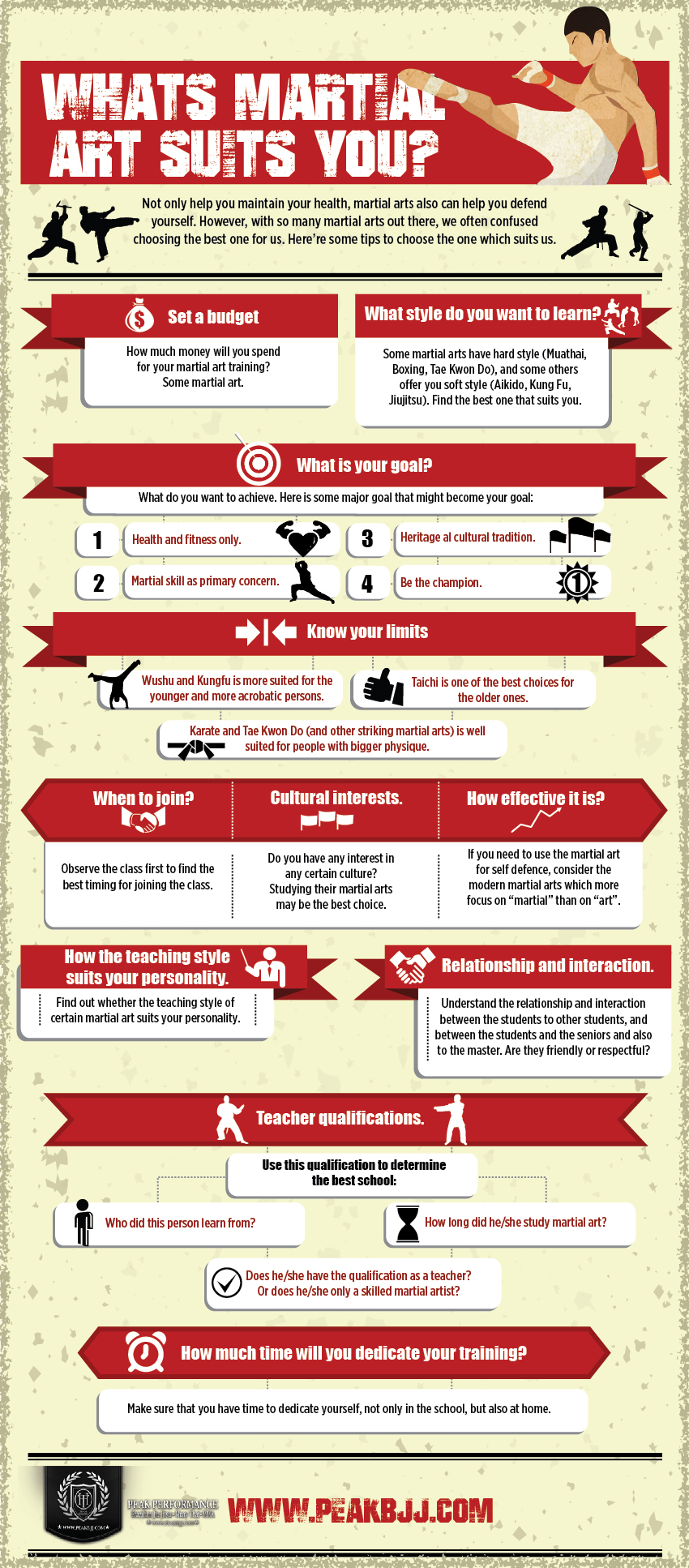Discover The Appealing World Of Martial Arts, Where Old-Time Customs Mix With Contemporary Efficiency
Discover The Appealing World Of Martial Arts, Where Old-Time Customs Mix With Contemporary Efficiency
Blog Article
Published By-Ingram Stokes
Enter the old world where martial arts were born out of necessity in varied areas. Societies crafted unique combating styles linked with historic contexts. Methods evolved over centuries with devoted practice and social exchanges. Today, contemporary martial arts blend traditional aspects for optimal efficiency. Philosophically, martial arts stress discipline, self-improvement, and consistency. Respect, humility, and balance are fundamental concepts assisting professionals in the direction of development and strength. Check out mouse click the up coming post of this rich history and approach to discover the profound impacts forming this enduring self-control.
Origins of Martial Arts
Fighting style came from different regions all over the world, developing as functional combat systems to defend against threats. These old fighting styles were established out of necessity, with each society crafting strategies suited to their distinct atmospheres and difficulties. From the grappling arts of Jujutsu in Japan to the striking techniques of Kung Fu in China, martial arts were deeply intertwined with the historical, social, and cultural material of their particular societies.
In Japan, the samurai course polished martial arts like Kenjutsu, the art of the sword, which later on progressed into the much more promoted kind of Kendo. On the other hand, in Brazil, Capoeira became a mix of dancing and combat, created by enslaved Africans as a means to withstand fascism. Each fighting style brings with it an abundant background and ideology, showing the values and beliefs of the people that practiced them.
As you explore the beginnings of martial arts, you reveal a tapestry of human resourcefulness, resilience, and the stubborn spirit of warriors throughout time.
Evolution of Methods
Via centuries of technique and refinement, battle strategies within various martial arts have actually undertaken a profound development. From ancient styles like Kung Fu and Karate to much more modern-day techniques such as Brazilian Jiu-Jitsu and Krav Maga, the development of strategies has actually been driven by a mix of cultural influences, practical applications, and technological advancements.
god of martial arts - chapter 116.2 of this advancement is the cross-pollination of strategies between different martial arts. For instance, techniques from typical Japanese Jiu-Jitsu were integrated right into the creation of Judo by Jigoro Kano in the late 19th century. This mixing of styles has actually led to the development of crossbreed martial arts like Mixed Martial Arts (MIXED MARTIAL ARTS), which integrate components of striking, grappling, and entry techniques.
In addition, the development of techniques has been formed by the raising focus on efficiency and efficiency in fight. Experts have continually sought to fine-tune their methods with strenuous training, testing, and competitors, resulting in the development of extremely specialized and reliable fighting designs. On the whole, the evolution of strategies in martial arts shows the dynamic nature of battle and the recurring pursuit for improvement and development.
Thoughtful Foundations
Checking out the underlying philosophical concepts of martial arts gives insight into their core values and assisting ideas. At the heart of lots of martial arts disciplines is the concept of self-control itself. By educating your body and mind to work as one natural device, you grow technique that expands beyond the dojo or gym right into day-to-day life. This technique incorporates regard, humbleness, and self-constraint, forming not simply your physical capacities but also your character.
An additional basic philosophical structure in martial arts is the concept of continual self-improvement. The trip of mastering a martial art is relentless, with experts regularly making every effort to much better themselves, both literally and psychologically. This focus on growth fosters resilience, determination, and a growth state of mind that can be applied to all aspects of life.
Moreover, martial arts highlight the value of harmony and equilibrium. Techniques are made to make use of a challenger's power against them, highlighting the concept of producing and rerouting pressure rather than meeting it head-on. This approach includes social partnerships, promoting serene resolutions and good understanding. By embracing these philosophical foundations, martial artists not only boost their combat skills but also cultivate a lifestyle centered on individual growth, regard, and consistency.
Verdict
To conclude, the background and approach of martial arts supply a rich tapestry of practice, discipline, and self-improvement.
Take for instance the story of Bruce Lee, who changed martial arts by blending various styles and approaches to develop his own special kind of Jeet Kune Do.
Via devotion and advancement, martial artists continue to push limits and inspire others to reach their complete capacity both in combat and in life.
